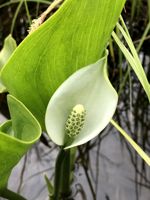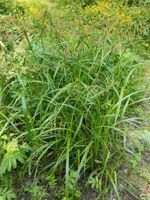Mon-Fri 9am - 5pm Mountain time
Water Arum vs Panicled Bulrush
Calla palustris
Scirpus microcarpus
CUSTOM GROW
CUSTOM GROW
Water Arum is a native perennial wetland plant known for its showy white oval sheaths (spathe) that surround a yellow-green, cylindrical flower spike (spadix). It has large, oblong, heart-shaped leaves on stems that rise above the water from shallow, spreading rhizomes. The blossoms are followed in late summer by tiny, pear-shaped fruits that ripen to bright red, adding ornamental interest to wet habitats.
Water Arum provides food for birds and small mammals that eat its berries, and its flowers attract pollinators. It can tolerate cold climates and forms colonies in shallow water and saturated soils. It is well-suited for ecological restoration, riparian planting, naturalisation, and habitat projects in wet and shaded environments.
Panicled Bulrush is a native perennial sedge that thrives in saturated soils and shallow water. Spreading readily by rhizomes, it quickly forms tall clumps that make it especially valuable for riparian plantings, erosion control, ecological restoration, and naturalization projects.
Its many-branched clusters of small flower heads give the plant its name and add texture to wetland landscapes. In addition to stabilizing shorelines and improving habitat quality, Panicled Bulrush provides food and cover for waterfowl, small mammals, and other wildlife. A cool-season grower, it is most active in spring and fall, slowing or going dormant during the heat of summer.
Water Arum Quick Facts
Panicled Bulrush Quick Facts
Toxicity: toxic if ingested

